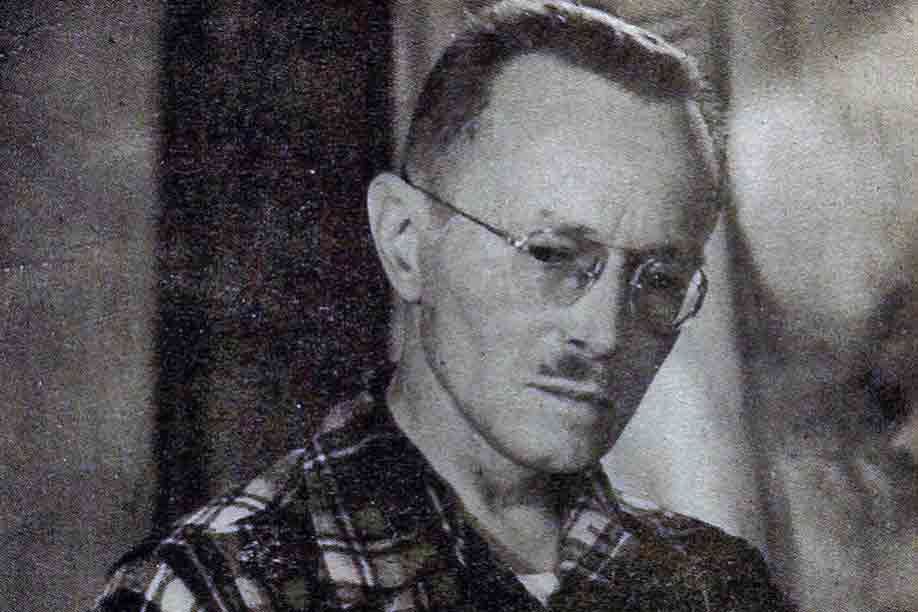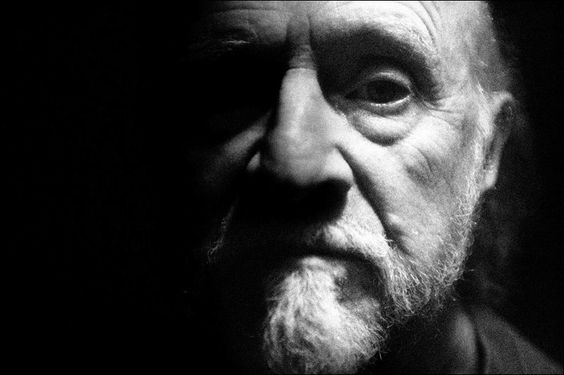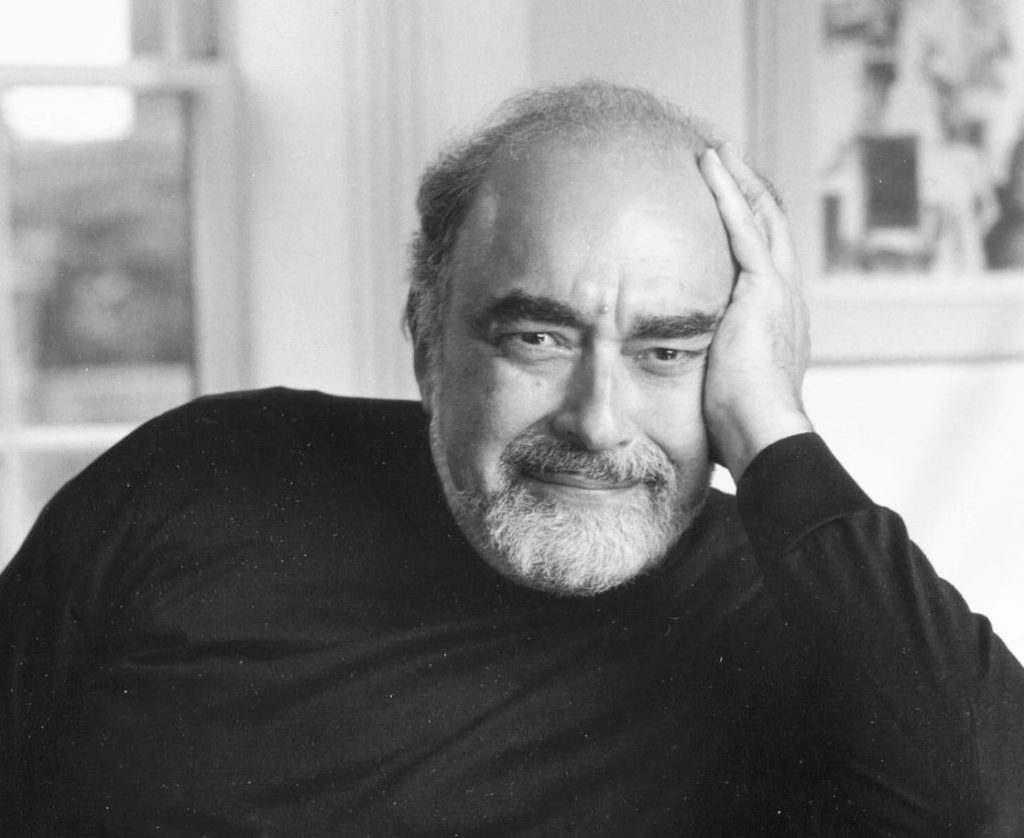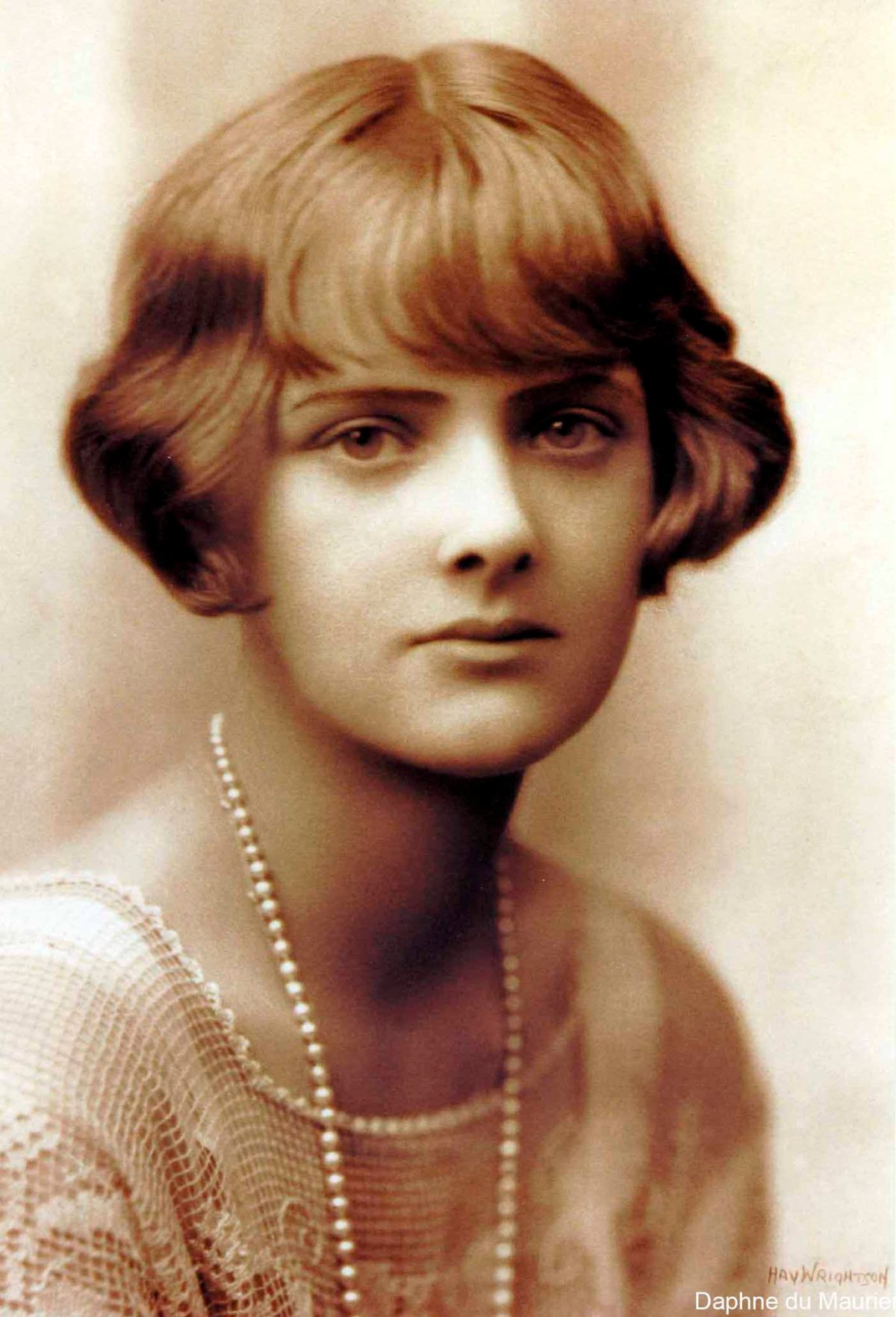After more than a century of Gothic and dark Expressionist fiction was succeeded by the Weird writers we now often associate with H. P. Lovecraft, you’d think the horror genre would’ve easily congealed into a recognized genre. Oddly enough, in both film and literature that category would prove to be elusive until at least the late 60’s/early 70’s. This wasn’t for lack of authors working the mines of the macabre. One-off novels like The Lord of the Flies by William Golding made their impact on culture, as did lesser-known works such as the strange The Edge of Running Water by William Sloane. The author Manly Wade Wellman combined Appalachian folk tales with cosmic horror, John Collier published bizarre stories in venues as respectable as The New Yorker, and British adventure writer Dennis Wheatley made a career out of fusing Satanic occultism with espionage and fears of resurgent Nazism.
Still, despite their works and those of the authors on this list, the genre was rarely given its own spaces in bookstores or in publishing houses. This may have something to do with various cultural panics like the one headed by Fredric Wertham or lesser crusades in the name of “decent” film and literature waged by self-appointed members of the morality police. Arguably, a lot of energy was also bound up in the burgeoning fantasy, science fiction, and mystery genres, all of which gained cultural credibility while the fiction of the macabre was pushed to the side. Despite these trends, though, horror developed slowly and surely in the dark corners of the publishing world.
Unlike with Weird Fiction, about whom there is some general consensus of important authors, mid-twentieth horror is a fuzzier field. Writers like Hugh Cave and Charles Beaumont carved out little niches for themselves in magazines and short story anthologies with grotesque tales (and, for Beaumont, in The Twilight Zone). Others, like Theodore Sturgeon and even Isaac Asimov, Arthur C. Clarke, and Robert Heinlein, better known now as science fiction authors, made occasional and memorable forays into the world of horror. And readers of non-Anglo/American literature will rightfully point toward writers such as Stefan Grabiński, Kobo Abe, Sadegh Hedayat, and Jorge Luis Borges as developing their own visions of the odd and the terrifying. I’ll be giving several of those authors a better look in a future list, but to be fair, horror as a publishing niche seems to have largely begun in the U. S. and the U. K., largely built on the fiction of those I cover here.
If you’ve read much genre fiction at all, you’ve likely heard of several, if not all, of the following authors. But it’s my hope to help introduce new generations to these old creators, all of whom laid the paths followed by more recent and familiar authors of dark fiction.

Fredric Brown
(1906-1972)
Fredric Brown was a genre-defying pulp writer, and while most of his work can be classified as noir and science fiction, his forays into horror influenced generations of writers and filmmakers. Even those mysteries and science fiction stories are characterized by a darkness uncommon in those genres at the time. Brown’s tales, long and short, often end with a cruel or disturbing twist that’s a little funny as well. He counts among his admirers and creative descendants Stephen King, Guillermo del Toro, and many science fiction writers.
His novel The Far Cry is a good one for those seeking mystery novels with a creepy edge. Set in Taos, New Mexico, it’s about an unhappily married businessman who gets obsessed with a murder that took place in the house he’s renting. Here Comes a Candle is excellent as well, about another man obsessed, this time with a violent nursery song.
It was through his novel The Screaming Mimi, though, that Brown had arguably his strongest influence. This mystery and its shocking twist ending served as the direct inspiration for Dario Argento’s first film, The Bird with the Crystal Plumage, and it hovers behind not only several of Argento’s other gialli but also many subsequent mystery/horror thrillers.
Jim Thompson is another mid-twentieth century mystery/horror writer comparable to Brown. A favorite of mine, his The Killer Inside Me has had long staying power, as have several of his other crime novels.

Daphne du Maurier
(1907-1989)
Daphne du Maurier’s work is now probably most familiar from its cinematic adaptations. Her novel Rebecca, about the new wife of a rich widower who finds her predecessor’s death was more mysterious than she’s been told, has been recently filmed for Netflix, but it was most famously turned into a movie by Alfred Hitchcock in 1940. While not a horror novel, the book had a massive impact on both romantic novels and mystery/thrillers such as Gone Girl. It also features the legendarily creepy Mrs. Danvers, herself the inspiration for a legion of other characters.
I love her story “Don’t Look Now,” about a couple who’ve recently lost their young daughter. In an attempt to distract his grief-wracked wife, John takes her on a trip to Venice. Once there, though, the couple encounters dangers both physical and supernatural. This story too was filmed and to great effect. But it was du Maurier’s short story “The Birds,” again made into a movie by Hitchcock, that has probably influenced the horror genre more than any other piece. The idea that the natural world (or some segment of it) might turn against human beings in a catastrophic way has of course now had a long lifespan, but it largely started with du Maurier’s story.
I haven’t read Rebecca myself (though I dug Hitchcock’s adaptation), but I’ve heard it still stands up. What I can attest to is the power and intrigue of her short stories, most of which blend the psychological and paranormal in a unique and usually elegant manner. She more recently was honored by the extraordinary TV series Hannibal, in which Hannibal Lecter’s own strange and morally compromised therapist was named Bedelia Du Maurier.

Fritz Leiber
(1910-1992)
Leiber is perhaps best known now, by those who still remember him, as the author of a series of fantasy tales about two rogues named Fafhrd and the Gray Mouser, as well as for his science fiction. In fact, Leiber is believed to have coined the phrase “sword and sorcery” as a genre-descriptor. He had, however, a profound effect on the horror genre too, particularly through his short stories and two astonishing novellas. Leiber brought a modern sensibility to his fiction, replacing old castles and small towns cursed with Elder Gods with stories set in cities and other recognizable environments. His “Smoke Ghost,” originally collected in Night’s Black Agents, is a chilling story about a man haunted by a feeling of being watched as well as by the sight of ragged shape moving across the rooftops of Chicago.
His novella Our Lady of Darkness was another milestone in mid-twentieth century horror fiction and a favorite of mine. In it, we follow Franz Westen, a writer, recovering alcoholic, and recent widower who lives in San Francisco. After finding a journal he believes may have belonged to early genre-writer Clark Ashton Smith, Westen gets sucked into a mystery involving an eccentric occultist, disturbing figures happy to manifest in broad daylight, and a magical science involving the structures of large cities. Often paired with Our Lady is his short novel Conjure Wife, in which a man discovers that his wife, alongside many other women he knows, is a witch.
Leiber laid the groundwork for modern urban horror and was a formative influence on authors ranging from Ramsey Campbell and Harlan Ellison to Neil Gaiman and Michael Chabon.

Robert Aickman
(1914-1981)
Robert Aickman deserves to be so much better known than he is today. His “strange stories” were an inspiration for authors like Neil Gaiman, Joyce Carol Oates, and Peter Straub, and he’s the closest author I’ve found who is a literary equivalent of David Lynch. Aickman was fascinated by psychology, and his tales run on the logic of the subconscious. His dreamlike stories will often disturb his readers despite their refusal to adhere to conventional scary story structures, ending in strange, often abrupt ways that will leave you feeling like you can almost, but not quite, grasp the shape of something he’s gesturing at.
Aickman wrote a small handful of novels (including one of the first lesbian novels I know a man to have written), but his most famous works are his shorter stories. I’ve covered two of his best short story collections, The Wine-Dark Sea and Cold Hand in Mine, in more detail elsewhere, but really any of his books will reward a read. While his influence was only to be felt strongly later, Aickman was one of the greats in mid-twentieth century horror literature.

Shirley Jackson
(1916-1965)
Mid-twentieth century author Shirley Jackson, alongside Mary Shelley and Anne Rice, is one of the founding mothers of modern horror. Those she’s influenced include, but are by no means limited to, Stephen King, Victor LaValle, Sarah Waters, and Ottessa Moshfegh (the latter, most obviously, in her excellent “Eileen”). For decades, she was primarily known to common readers for the short story “The Lottery” and its vicious twist ending. Within the genre, though, her reputation has largely rested on The Haunting of Hill House, still the gold standard in haunted house novels.
Jackson’s other work definitely repays attention. Her short novel We Have Always Lived in the Castle, about two sisters distrusted by their neighbors who live in the ruins of their family mansion, is a creepy psychological mystery. Her short stories tend to be similar to “The Lottery”: tight little tales about human cruelty and abnormal psychology. Mixed in with these stories are also often amusing or even romantic realistic stories.

Robert Bloch
(1917-1994)
While Robert Bloch’s name may not be familiar to even many horror fans, most have seen the film adaptation of his most famous novel, Psycho. This story, about mild-mannered motel owner Norman Bates and his mysterious mother, not only inspired a movie franchise (many of the entries surprisingly good) and an excellent TV series, Bates Motel, it also played a significant role in developing the slasher sub-genre and the presence of the “Final Girl” archetype. Based in part on the reported activities of real-life serial killer Ed Gein, Psycho was interestingly enough also a byproduct of H. P. Lovecraft. Bloch began his career writing pastiches of Lovecraft’s cosmic horror stories, as well as trading letters with HPL. Lovecraft eventually encouraged the teenaged author to broaden his imagination to include things he personally found horrific, and his interest in Gein led directly to this milestone of mid-twentieth century horror fiction.
Bloch wrote several other novels which have had their impact on thriller and mystery fiction, but for my money his most entertaining creations are his short stories. The “conte cruel” is a sub-genre of fiction made up of very short stories with a particularly cruel twist at the end, and most of Bloch’s work fits in this category, often ending in narrative turns both shocking and funny. “Yours Truly, Jack the Ripper,” “That Hell-Bound Train,” and “The Skull of the Marquis de Sade” are entertaining stories representative of this tendency of his.
Stephen King was strongly influenced by Bloch (a comment of Bloch’s about clowns served as part of the inspiration for It), as were Harlan Ellison, Richard Matheson, Ramsey Campbell, and, weirdly enough, Arthur C. Clarke.

Ray Bradbury
(1920-2012)
I imagine that of all the authors on this list, Ray Bradbury is the one likely to be familiar to the most readers. His novel Fahrenheit 451 is classic 20th century dystopian literature, an examination of a society grown so anti-intellectual and authoritarian that merely to own a book is a crime. The Martian Chronicles, a collection of science fiction stories largely set on Mars, had and continues to have a massive influence on science fiction and fantasy authors, and Bradbury’s contributions to film and television have been equally as trendsetting.
In the horror circles, Bradbury is best known for his novel Something Wicked This Way Comes and two collections of short stories, The Illustrated Man and The October Country that brought the genre forward. Something Wicked focuses on a carnival that rides into a small American town, bringing evil and destruction in its wake. The carnival’s mysterious and malignant proprietor, the heavily tattooed Mr. Dark, has served as a template for countless other horror baddies, and his twisted circus attractions are still disturbing more than 60 years after the novel’s publication. The stories in those collections have also proved long-lasting, including such classics as “The Veldt,” “The Small Assassin,” and “The Scythe,” all maddeningly simple and brilliant slices of the macabre touched with stylistic flourishes which would go on to lend the genre some much needed critical credibility.
Along with Stephen King, Steven Spielberg, and Neil Gaiman, Bradbury’s work also had a formative impact on Ursula Le Guin, Stan Lee, R. L. Stine, and countless other authors and artists.

Patricia Highsmith
(1921-1995)
Patricia Highsmith helped create and develop the modern thriller, particularly the sort of story that follows the perspective of sociopaths and serial killers. Unlike most of her predecessors in crime fiction, she was less interested in showing how murderers could be caught than in what makes them tick, bringing a psychological acuity and sympathy for darkly warped characters to her stories. She paved the way for authors like Thomas Harris, Gillian Flynn, and Ruth Rendell, all acute observers of the worst corners the human mind can wander into.
Her novel Strangers on a Train was filmed by Alfred Hitchcock and her book The Price of Salt was possibly the first lesbian novel with a happy ending (Highsmith herself was a lesbian), but her most famous and enduring creation is easily the dapper, intelligent, and almost entirely amoral Tom Ripley, a forerunner of Hannibal Lecter. Beginning with The Talented Mr. Ripley, this suave serial killer has persisted across five novels, at least four movies, and an upcoming TV series.

Richard Matheson
(1926-2013)
A legend in the genre, the mid-twentieth century horror and science fiction writer Richard Matheson wrote so many classics I can’t mention them all. I Am Legend, A Stir of Echoes, Hell House, and a good third of the original episodes of The Twilight Zone came from his typewriter. Hell House, a vicious take on the story archetype created by Shirley Jackson, had quite an impact on subsequent horror authors, particularly as the genre got darker and more violent. I Am Legend directly inspired George Romero’s Night of the Living Dead, essentially making it the granddaddy of all zombie movies and novels. The collection of stories Nightmare at 20,000 Feet gathers some of his strongest short work, including the titular piece based on his screenplay for the episode of The Twilight Zone that involves a man, a plane, and a mischievous gremlin.
Stephen King is Matheson’s most visible literary descendent. King has often spoken of the impact reading I am Legend had on his imagination, particularly in how seeing vampires in such modern situations unlocked his own ability to set horror in the world he knew and not some ancient Gothic setting. Anne Rice, Steven Spielberg, and Roger Corman (with whom Matheson worked) also have cited the author as a major influence.

Ira Levin
(1929-2007)
Of all the mid-twentieth century authors on this list, Ira Levin is probably the most influential in making horror a recognized publishing category. His Rosemary’s Baby, along with William Peter Blatty’s The Exorcist and Peter Benchley’s Jaws (and of course their film adaptations), proved there was a solid audience (and a lucrative market) for literary horrors. For that alone, Levin would be memorable, but most of his novels are still genuinely enjoyable. Written in spare, even minimalistic prose, his books are fast-paced and twisty, with a darkly satirical edge.
Rosemary’s Baby paved the way for The Exorcist, The Omen, and other devil-centric novels and movies, while The Stepford Wives and The Boys from Brazil tackled social issues through creepy science fictional techniques. And his play Deathtrap, immensely popular on Broadway, has spawned many an imitator in the realm of mystery thrillers.
Horror creators who’ve claimed Levin as a major influence include Chuck Palahniuk, Jordan Peele, Peter Straub, and many others.
